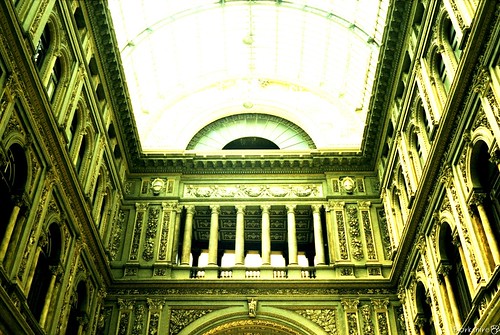
Image : http://www.flickr.com
What else do you know that can compare to the magnificent colors you see when you look through your camera lens at a butterfly? Maybe a butterfly sitting on a beautiful brilliant flower. It doesn't get any prettier than that. If you're lucky enough to have a garden with flowers that attract these winged beauties, and you're into photography, hopefully, you've been getting some great shots. But, if that doesn't describe your situation, you may find some of these tips helpful in getting started.
There are three great environments for photographing butterflies. The outdoors, garden settings, and butterfly farms or houses. People have been collecting butterflies for centuries. Catching them, killing them and displaying them on boards and in cases. Catching them on film is a great alternative. The butterfly gets to live and the pictures live on.
You don't have to have a lot of special equipment or a big, expensive camera to begin your butterfly photography. Actually, you may be spending a lot of time getting up and down off the ground to get those great shots. The smaller point and shoot camera and the convenience of a quality fanny pack camera bag would be just perfect for butterfly photography. You'll also need a good helping of patience and a lot of time. You can't go out and call butterflies. You can, however, set yourself up to have the best possible opportunity to find butterflies to photograph.
Butterflies are attracted to colors and scents. If your desire is to photograph butterflies in their natural habitat, you might go out a day or so ahead of time to locate an area that has the right conditions for butterfly photography. A couple good places to look would be fields that are loaded with wildflowers or areas of damp or moist soil. If you live in an area that is lush with forests, rivers, streams, and waterfalls look in those areas for some perfect shots of these magnificent creatures.
If you have a garden filled with flowers of purple, lavender, white, yellow, orange, and red, you should be able to go out your back door, set up your tripod, and wait for the butterflies to appear. Some of the most popular flowers for butterflies are alyssum, dahlias, honeysuckle, impatients, marigolds, petunias, sunflowers, candytuft, and zinnias. You can also help encourage them to your garden by putting out some over ripe fruit or nectar. Butterflies are attracted to the scent of rotting fruit.
Check your background before you're start your photo shoot. Ideally, try to situate yourself so that the background compliments the butterfly. Do your best to frame the shot to eliminate unwanted background items. Get as close to the subject as you possibly can, without scaring it away, so that the butterfly fills the picture. Another way to deal with unwanted background images is to set your camera to blur the background. Butterflies are attracted to flowers that are in the sun rather than the shade, so be positioned properly when taking your shots.
Have your camera bag packed and ready the day before, so you can head out early in the morning. Have extra film or memory cards, extra batteries, and a tripod. As with most photography, the best time to photograph butterflies is either early in the morning or late in the evening. Not only is the lighting best, but the butterflies won't be quite as active during these times of the day when it's cooler. It will give you a little more time to take the shot when the butterfly comes into view. Take as many pictures of the butterfly as you can before it flies away. Don't wait for what you think may be the perfect shot or you may not get a picture at all.

